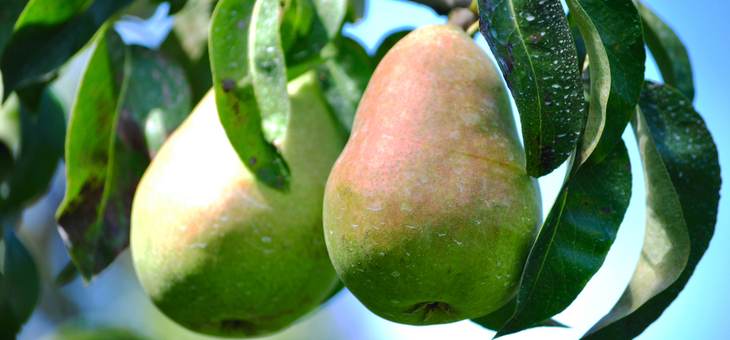Strawberries have once again topped the 2021 Dirty Dozen List, meaning one American non-profit has identified them to have the highest percentage of pesticide and chemical contamination.
The US-based Environmental Working Group (EWG) produce a list each year of the most contaminated fruits and vegetables in the United States. But is it the same for Australia?
Read more: Vegies 50 per cent less nutritious
The Dirty Dozen and Clean Fifteen lists were started in 2004 and their data is based upon thousands of pesticide and insecticide related reports from the US Department of Agriculture as well as the Food and Drug Administration.
Unfortunately, we don’t have the same kind of data collected in Australia, but there may be some overlap with the EWG’s findings.
2021 Dirty Dozen List:
- strawberries
- spinach
- kale/collard greens
- nectarines
- apples
- grapes
- cherries
- peaches
- pears
- capsicum and chilli
- celery
- tomatoes
More than 90 per cent of strawberry samples tested positive for residue of at least two pesticides, according to the EWG’s 2021 Shopper’s Guide to Pesticides in Produce.
And strawberries are far from alone. Some 90 per cent of samples of apples, cherries, spinach, nectarines and leafy greens also had residues of two or more pesticides.
More than 46,000 samples were taken by federal agencies and the ranking accounts for both the percentage of samples with pesticides, and the number of pesticides detected on samples.
It’s worth noting that before testing each produce, it is processed the same way consumers would process it at home; inedible peels are removed, and other produce is washed and drained.
Now again, these are based entirely on data, research and studies carried out in the USA. They still do hold some weight though, as 8 per cent of Australia’s annual fruit and vegetable imports in 2020 came from the United States.
Friends of the Earth published their own independent study on the levels of chemicals in Australian produce and found similar results. They also noted that produce imported from India and China is of higher concern due to the use of the sterilising gas Ethylene Chlorohydrin and the insecticide Chlorpyrifos detected most frequently in fruits and vegies from these countries.
It’s also interesting to note that similar fruits and vegies appear in the Dirty Dozen list year on year. These are ones with relatively thin, or consumable skin such as strawberries, nectarines, grapes, cherries and more.
The levels of contamination in these fruits and vegies are largely negligible to humans on a standard Western diet, but if you are vegetarian or vegan, it might be worth noting.
A 2011 study from the Journal of Environmental Research and Public Health found that foods with a larger surface area, such as leafy greens, have more room for pesticides to make their way in.
If you’re worried about the levels of pesticide and chemicals in your food, try purchasing produce locally and ensure it is certified organic.
Use the Dirty Dozen as a guideline to what you should be wanting to buy organically.
A 2013 RMIT study found that eating an organic diet for just a week can cause pesticide levels to drop by almost 90 per cent in adults. Dr Liza Oates published results that saw participants’ urinary dialkylphosphates (DAPs) measurements were 89 per cent lower when they ate an organic diet for seven days compared to a conventional diet for the same amount of time.
Read more: Can organic foods cut cancer risk?
The EWG also found that produce with thick skins, such as watermelon, pineapple and avocados, are less likely to be penetrated by pesticides.
Foods like these often appear on the Clean Fifteen list and fare best in terms of pesticide residue.
For example, the EWG found that less than 2 per cent of conventional avocados and sweet corn had any pesticide residue.
In fact, looking at the Clean Fifteen as a whole, almost 70 per cent of samples had no pesticide residue and only 8 per cent of samples had more than one pesticide.
2021 Clean Fifteen:
- avocados
- sweet corn
- pineapple
- onions
- papayas
- sweet peas (frozen)
- eggplants
- asparagus
- broccoli
- cabbage
- kiwi
- cauliflower
- mushrooms
- honeydew melon
- cantaloupe
We’re not saying you should cut out any foods from your diet as any residue found was still well below safety guideline levels. Plus, the health benefits of eating a balanced diet greatly outweigh any potential risks.
Read more: Go organic and stay on budget
Eating fruits and vegies will never be unhealthy, but it might be worth spending a bit of extra time and money and going organic if you’re regularly consuming foods on the Dirty Dozen list.
Eat in season. Local and organic is best for you, your tastebuds and the environment but don’t let it stop you enjoying fruits and vegies if it’s not an option.
Do you buy any organic produce? Do you grow any vegies yourself? Share your thoughts on the topic in the comments section below.
If you enjoy our content, don’t keep it to yourself. Share our free eNews with your friends and encourage them to sign up.

